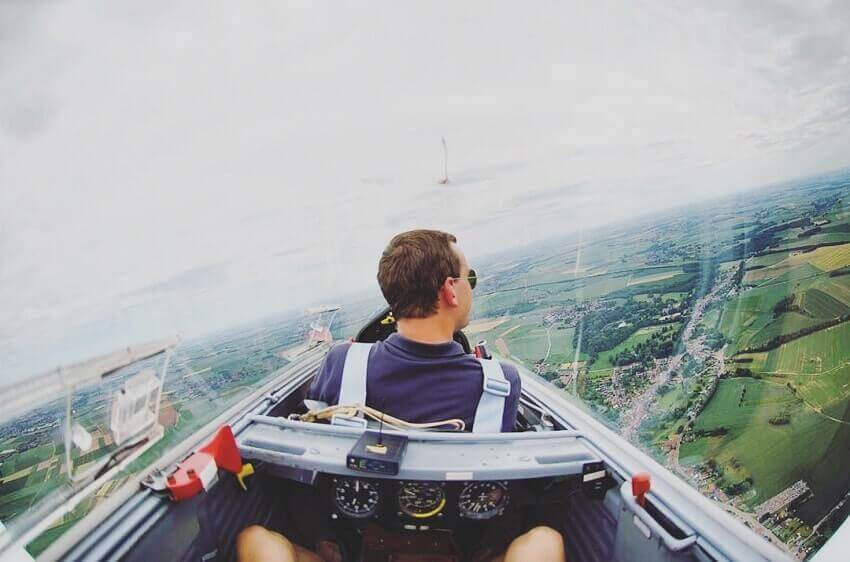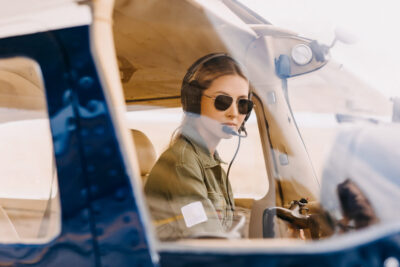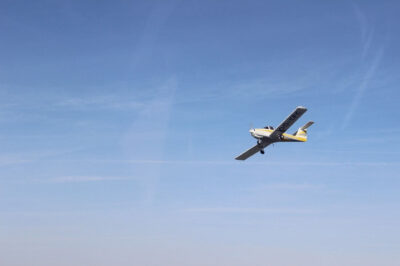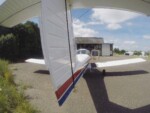Getting Your Private Pilot License – The Preparations
11 June 2018 | Updated on February 05, 2024
This post is part of the story series Getting Your Private Pilot License.
As a glider pilot with about 220 flying hours, I finally decided to take the jump and start my Private Pilot training in June 2018. In this series, I share my experiences of getting my Private Pilot License in Belgium. From preparing for my first lesson, to my first solo flights and ultimately my checkride.
I hope these articles will be able to help you get the most out of your own flight training!
The first post in this new story series and I couldn’t be more excited!
After 9 years of flying gliders, it’s finally time to take the next step in my aviation journey and get that Private Pilot’s License I’ve wanted for so long.
Before we get started, there are some important things to mention first.
First of all, it’s important to note that I am not starting my PPL flight training from 0 like most people do. I grew up next to the local airfield, where I started gliding at age 14 and soloed at 15 (and a half) years old. In the past 9 years, I have flown about 200 hours in different types of gliders. Besides this, I have a few hours flying motorized aircraft as well, but they were never officially logged.


Also, my flight training will be done in Belgium according to EASA standards and requirements. If you are flying in the US or outside of the EU, training schedules and requirements might be different than the ones I will be frequently mentioning in this series. I have chosen to do my training at a flying club rather than a flight school to reduce the cost a bit. Going this road will take me a little longer to finish all my training, but for me it’s the best way to go since I will pay out of pocket as I go.
To get your Private Pilot License in the EU, student pilots have to meet the following EASA minimum experience requirements before taking their checkride:
Minimum 45 hours, of which
- 25 hours dual instruction
- 10 hours solo, of which 5 hours solo navigation and 1 x-country flight of > 150 nm with 2 full-stop landings en route.
Thanks to my previous flight experience, I can deduct 10% of my previous experience flying gliders, with a maximum of 10 hours. This means instead of the required 45 hours before taking my checkride, I could theoretically do this at 35 hours, given that all the training is done and I passed my written test (more on that later).
If you know that an hour of aircraft rental and flight instruction in my club is around €150, 10 hours make quite a difference in the total cost!
The preparations
In Belgium, we say a good start is half the job. My goal will be to take the PPL checkride at 35 hours, the EASA minimum requirement with my previous flight experience credit (given that I also finish the theory by the time I reach that).
To make sure my training is efficient and I don’t lose too much (costly) flight time, I want to fly often and fly prepared.
This means I’ll make sure to plan my flights in advance and take advantage of the availability of my instructor and the flying club’s aircraft (more about planning and schedule below). Since I’ll only be able to fly during the weekend and Belgian weather can be quite.. well unpredictive, I want to make the most out of every opportunity to fly.
To maximize efficiency, I’ll also put extra effort into being prepared for every flight as good as I can. If I want to keep up with the training schedule and stay on track, I will need to make sure to use my time off during the week to stay focused on my flying lessons. I will try to use Microsft Flight Simulator X to refly the previous lesson, put some more practice in certain procedures and things I didn’t quite get right the last time and also use the sim to simulate the next lesson in order to be as prepared as possible. I hope this will help to avoid wasting too much time in the air.
We’ll find out soon enough if this method works!


The planning
Scheduling and planning the flights will be a really important factor if I want to finish the training as efficient as possible.
As I mentioned before, the hardest part of flying in a flying club is finding available planes and instructors. Especially since our airfield is only opened during weekends and holidays, this could become difficult if I want to keep up the pace of my flight training.


As you can see in the schedule, I booked slots for next Sunday. Since my instructor is only available one day every weekend I want to make sure to take advantage of any available slots during those days. I will book 2 hours for every flying lesson to have enough time for briefing and de-briefing of the flight. Weather permitting, I hope to finish every weekend at least one lesson.
The general flight training requirements according to EASA are the following:
- Pre-flight operations, including mass and balance determination, aircraft inspection and
servicing; - Aerodrome and traffic pattern operations, collision avoidance precautions and
procedures; - Control of the aircraft by external visual reference;
- Flight at critically low airspeeds, recognition of, and recovery from, incipient and full stalls;
- Flight at critically high airspeeds, recognition of, and recovery from, spiral dive;
- Normal and crosswind take-offs and landings;
- Maximum performance (short field and obstacle clearance) take-offs, short-field landings;
- Flight by reference solely to instruments, including the completion of a level 180 ° turn;
- Cross-country flying using visual reference, dead reckoning and radio navigation aids;
- Emergency operations, including simulated airplane equipment malfunctions;
- Operations to, from and transiting controlled aerodromes, compliance with air traffic services procedures, communication procedures and phraseology
Based on these requirements, my flight training schedule will look something like this:
- Exercise 1a: Familiarisation with the airplane
- Exercise 1b: Emergency drills
- Exercise 2: Preparation for and action after flight
- Exercise 3: Air experience: flight exercise
- Exercise 4: Effects of controls
- Exercise 5a: Taxiing
- Exercise 5b: Emergencies: brake and steering failure
- Exercise 6: Straight and level
- Exercise 7: Climbing
- Exercise 8: Descending
- Exercise 9: Turning
- Exercise 10a: Slow flight
- Exercise 10b: Stalling
- Exercise 11: Spin avoidance
- Exercise 12: Take-off and climb to downwind position
- Exercise 13: CIrcuit, approach and landing
- Exercise 12/13: Emergencies
- Exercise 14: First solo!
- Exercise 15: Advanced turning
- Exercise 16: Forced landing without power
- Exercise 17: Precautionary landing
- Exercise 18a: Navigation
- Exercise 18b: Navigation problems at lower levels in reduced visibility
- Exercise 18c: Radio navigation
- Exercise 19: Basic instrument flight
I’m so looking forward to this! In the next post, I will talk about the gear I will be using during my training, like headset, flight bag, kneeboard,…
Talk to you then,
Senne
If you have any questions about my experiences, flight training in general or other concerns, feel free to let me know in the comments below and I will do my best to answer as best as I can!
This post is part of the story series Getting Your Private Pilot License.
As a glider pilot with about 220 flying hours, I finally decided to take the jump and start my Private Pilot training in June 2018. In this series, I share my experiences of getting my Private Pilot License in Belgium. From preparing for my first lesson, to my first solo flights and ultimately my checkride.
I hope these articles will be able to help you get the most out of your own flight training!





























